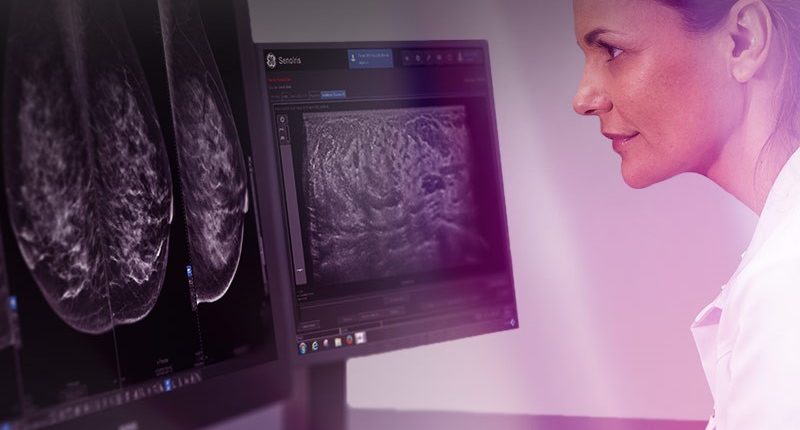As with every medical test and procedure, it’s important to consider the risks and benefits. With mammograms, the benefits are clear: early detection of breast cancer means earlier treatment and better outcomes. It could save your life.
The risks of mammograms are low, but include exposure to radiation, given that a mammogram is simply a specialized type of x-ray. In fact, fear of radiation exposure is a reason women avoid mammograms.[1],[2]
Radiation is used throughout medicine, both to treat certain conditions, like cancer, and to diagnose or screen for disease through CT scans, PET scans, bone scans, and, of course, x-rays.
X-rays are a form of energy that pass through your body. Most of it leaves your body; but a tiny bit can be absorbed – that’s the amount that determines your radiation dose. The “effective dose” required for whole body radiation is called the millisievert (mSv), and it is one of the primary ways of measuring radiation exposure.[3]
We’re exposed to an average of 3 mSv a year simply from naturally occurring radiation emanating from soil, rocks, and space. For instance, flying from New York to California exposes you to about 0.03mSv thanks to cosmic ray exposure. Your greatest exposure comes from radon gas in your home, which depends on where you live. On average, it’s about 2 mSv a year.4
In healthcare, the largest amount of radiation comes from CT scans. However, in recent years, the amount of radiation from these scans has been reduced in response to studies showing excessive doses.
While the amount of radiation exposure from a mammogram is tiny, we tend to overestimate the radiation exposure from a mammogram. In one study, researchers surveyed 1,723 women and two men undergoing mammograms about their knowledge of the radiation dosage. They found that just 13% correctly estimated the amount of radiation in a mammogram compared to other imaging tests; the rest guessed too high. The good news is that seven out of 10 still thought that the benefits of a mammogram outweighed the risks of radiation exposure.[4]
Reducing radiation exposure is one reason your breast is compressed during a mammogram – it helps improve the image so less radiation is needed.
Here’s how the amount of radiation you get in a mammogram compares to other commonly performed imaging tests.
| Test | Radiation dose | Comparable to natural background radiation (3 mSv/year) for: |
| PET scan | 25 mSv | 8 years |
| Coronary CT angiography | 12 mSv | 4 years |
| CT of the abdomen and pelvis | 10 mSv | 3 years |
| Upper GI study with barium contrast | 6 mSv | 2 years |
| Chest CT | 7 mSv | 2 years |
| Cardiac CT for calcium scoring | 3 mSv | 1 year |
| Spinal x-ray | 1.5 mSv | 6 months |
| Mammography | 0.4 mSv | 7 weeks |
| Chest x-ray | 0.1 mSv | 10 days |
| Dental x-ray | 0.005 mSv | 1 day |
| DEXA bone scan | 0.001 mSv | 3 hours |
Source: The American College of Radiology, the Radiological Society of North America. Available at: https://www.radiologyinfo.org/en/info.cfm?pg=safety-xray.
As you can see, the dose you get from a mammogram is low, while the benefits (including saving your life) are high.
When is your next mammogram?
[1] Bloom JR, Grazier K, Hodge F, Hayes WA. Factors affecting screening mammography among African American women. Cancer Epidemiol Biomarkers Prev 1991; 1:75–82
[2] Aro AR, de Koning HJ, Absetz P, Schreck M. Two distinct groups of non-attenders in an organized mammography screening program. Breast Cancer Res Treat 2001; 70:145–153
[3] The American College of Radiology, the Radiological Society of North America. What are x-rays and what do they do? Available at: https://www.radiologyinfo.org/en/info.cfm?pg=safety-xray
[4] Hollada J, Speier W, Oshiro T, et al. Patients’ Perceptions of Radiation Exposure Associated With Mammography. AJR Am J Roentgenol. 2015 Jul;205(1):215-21.




Leave a Reply